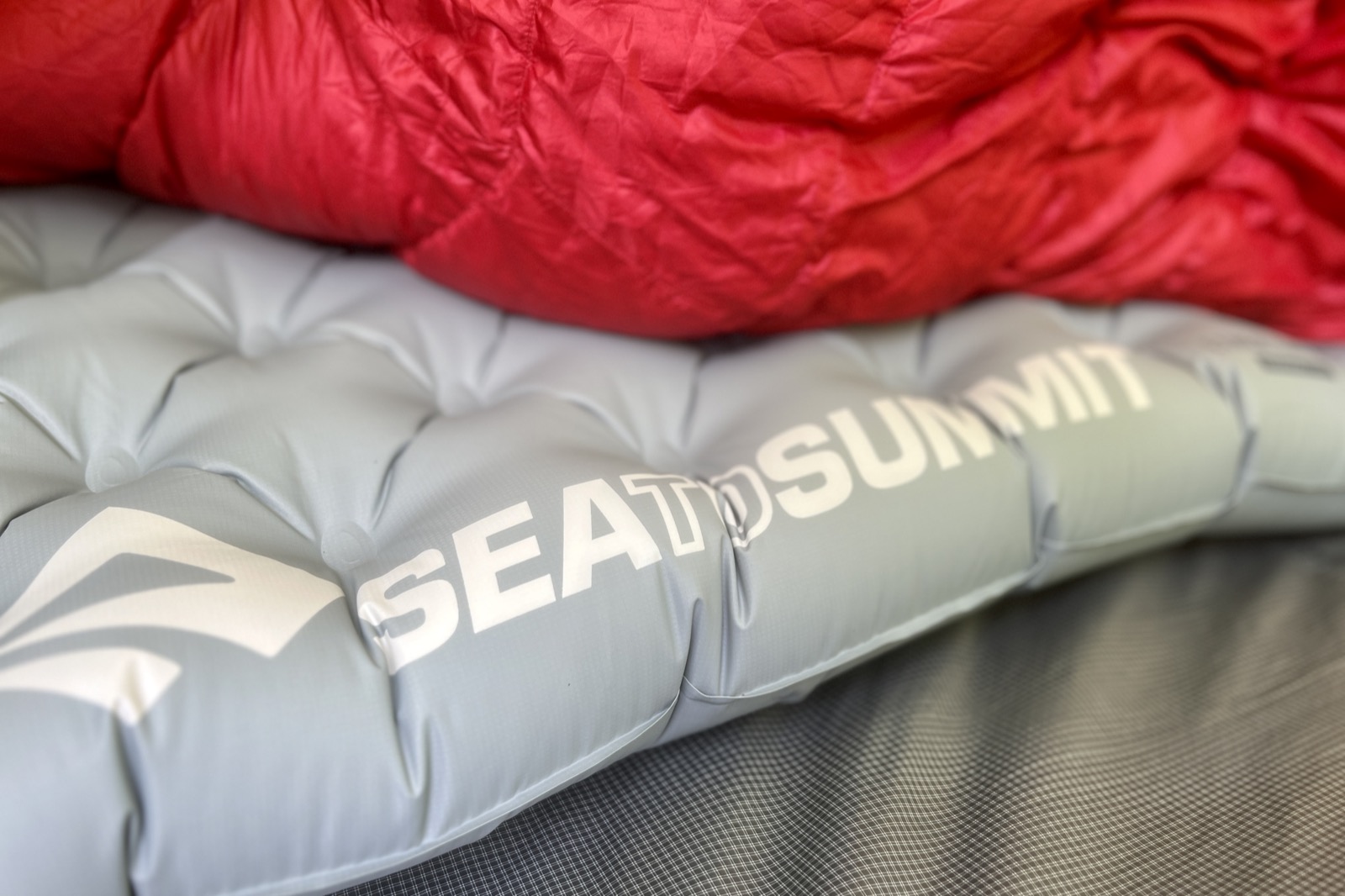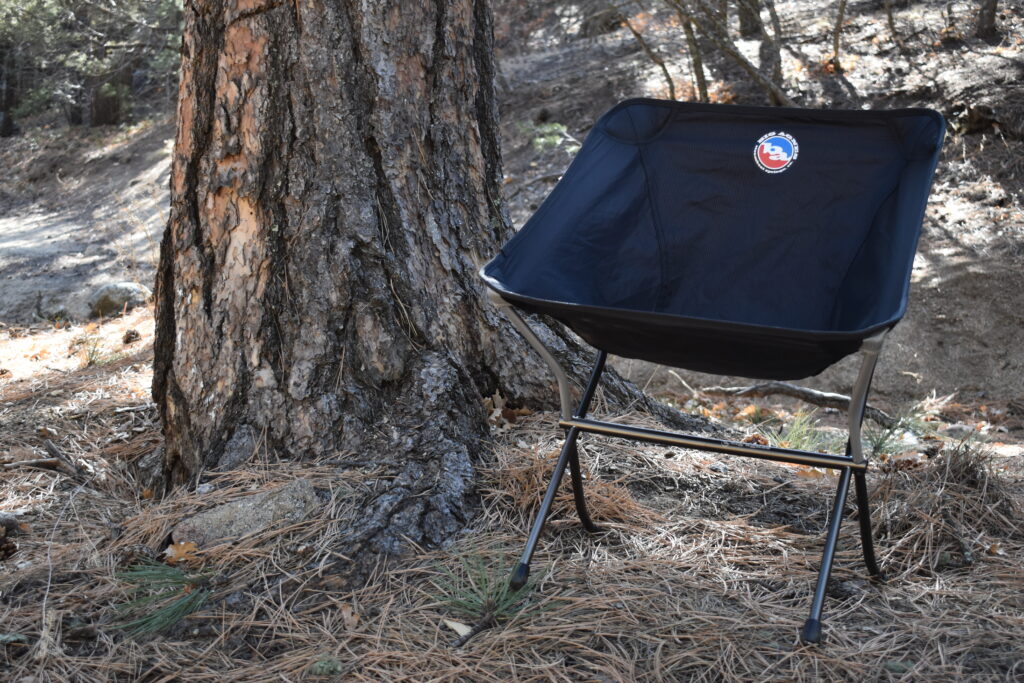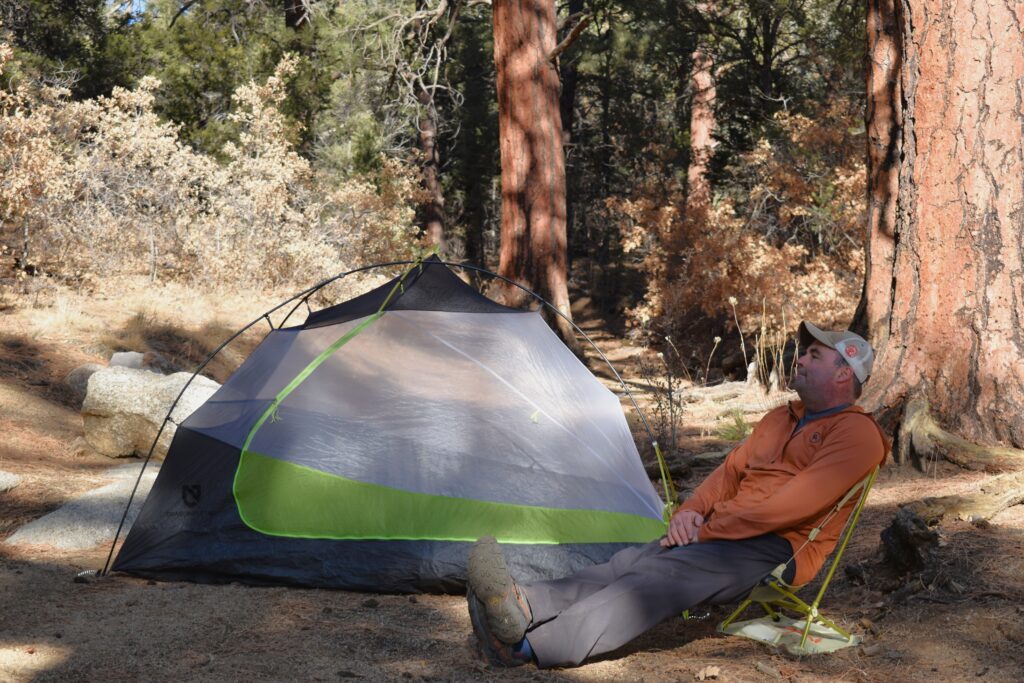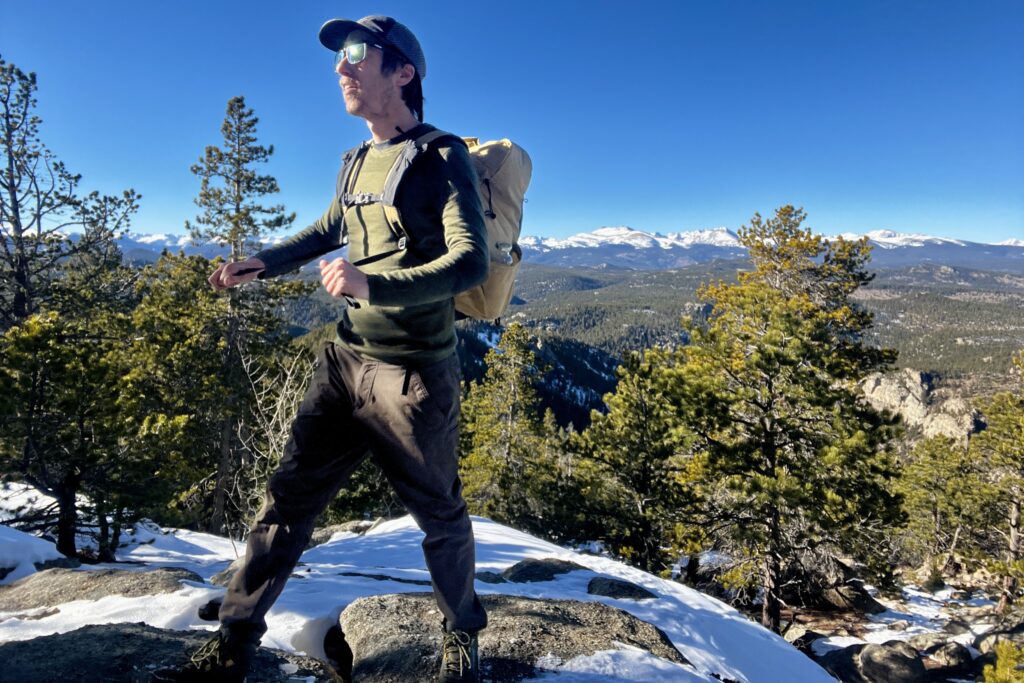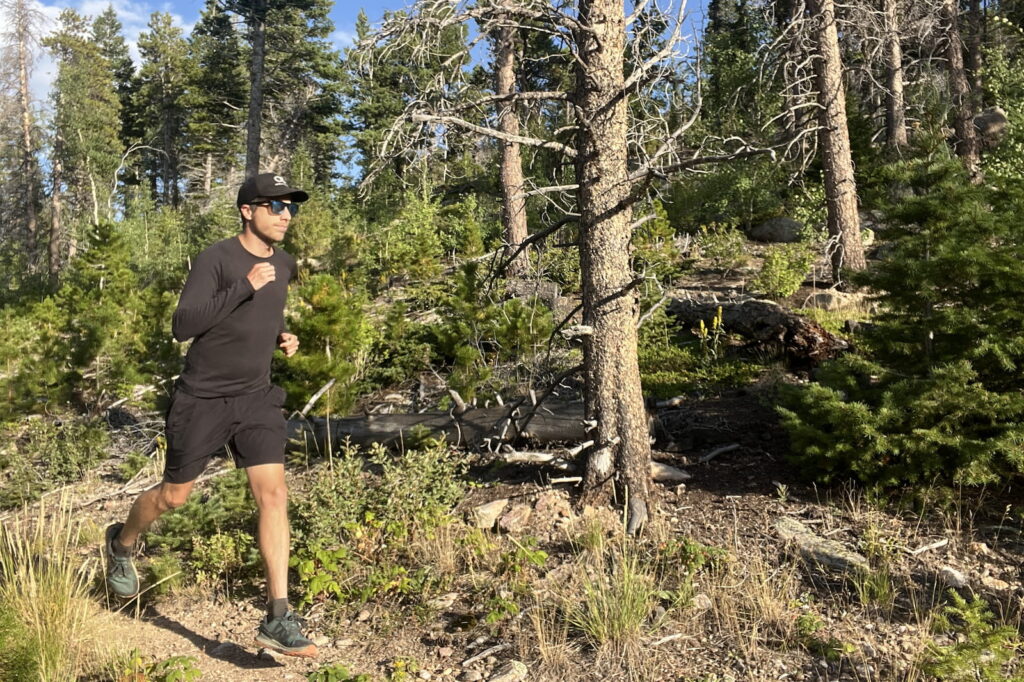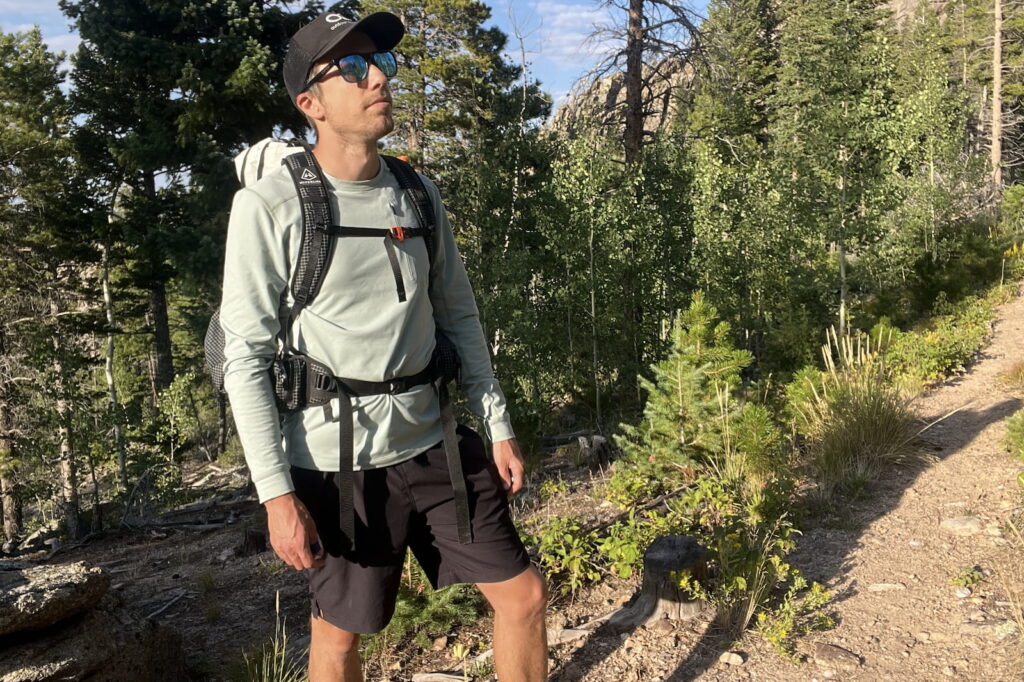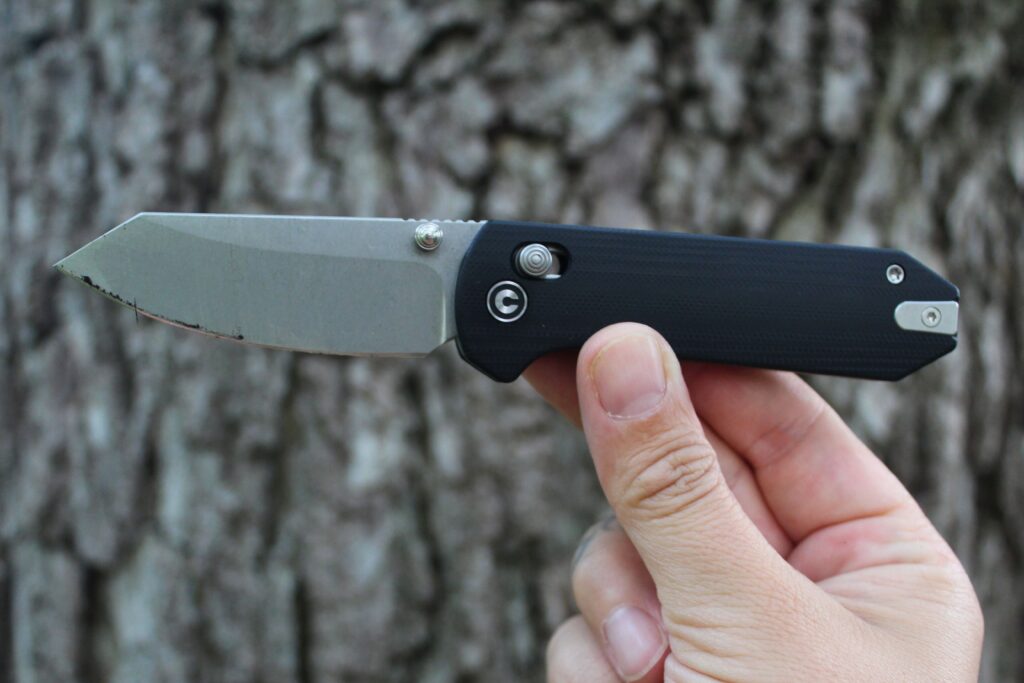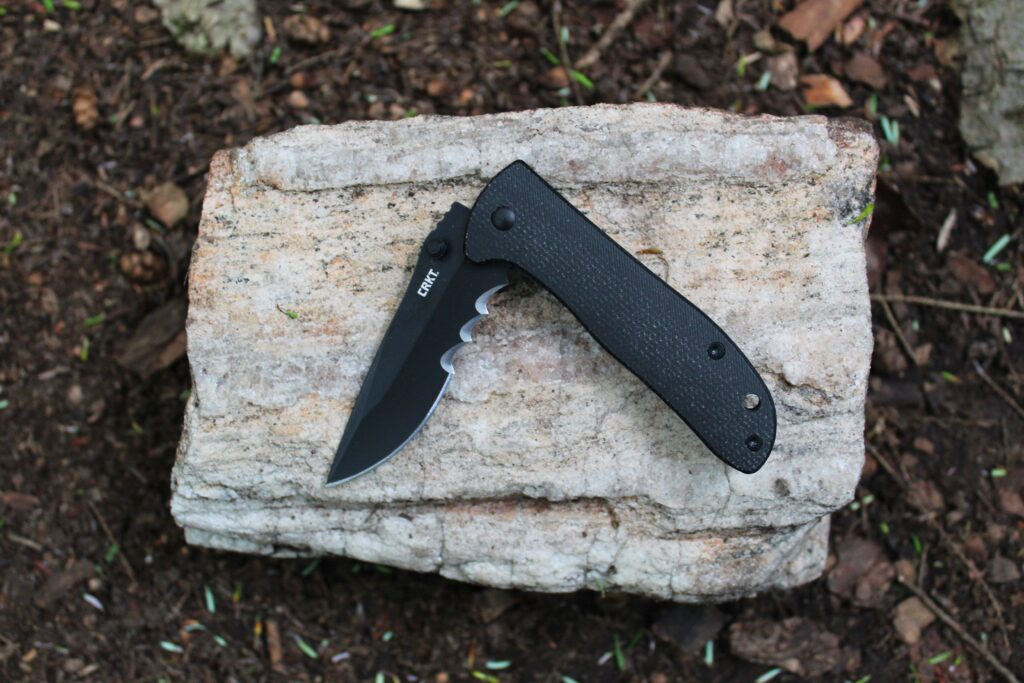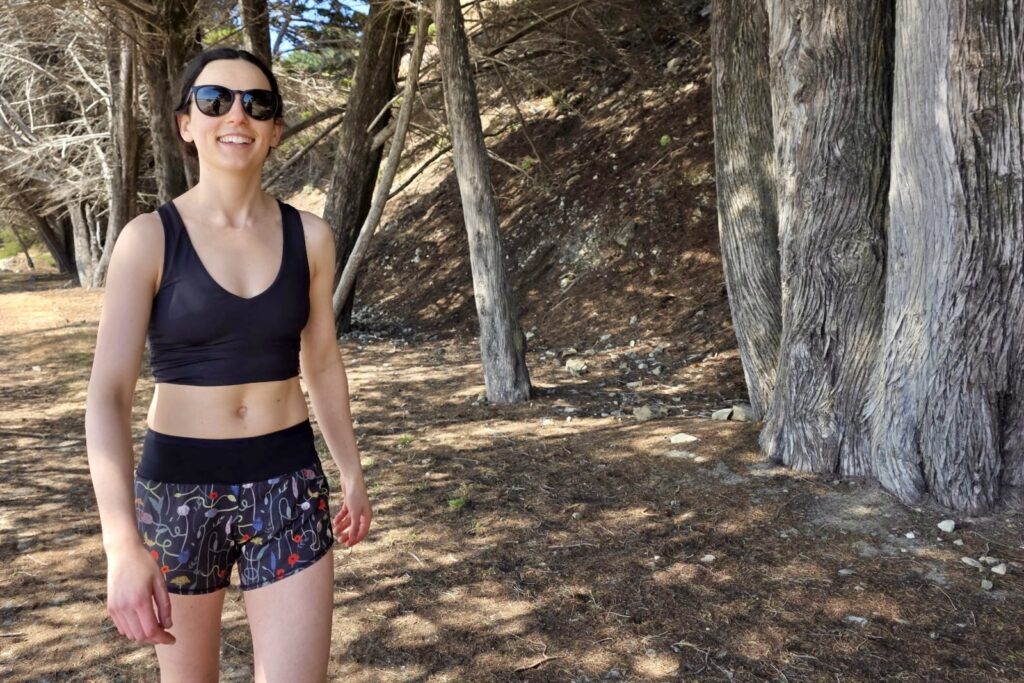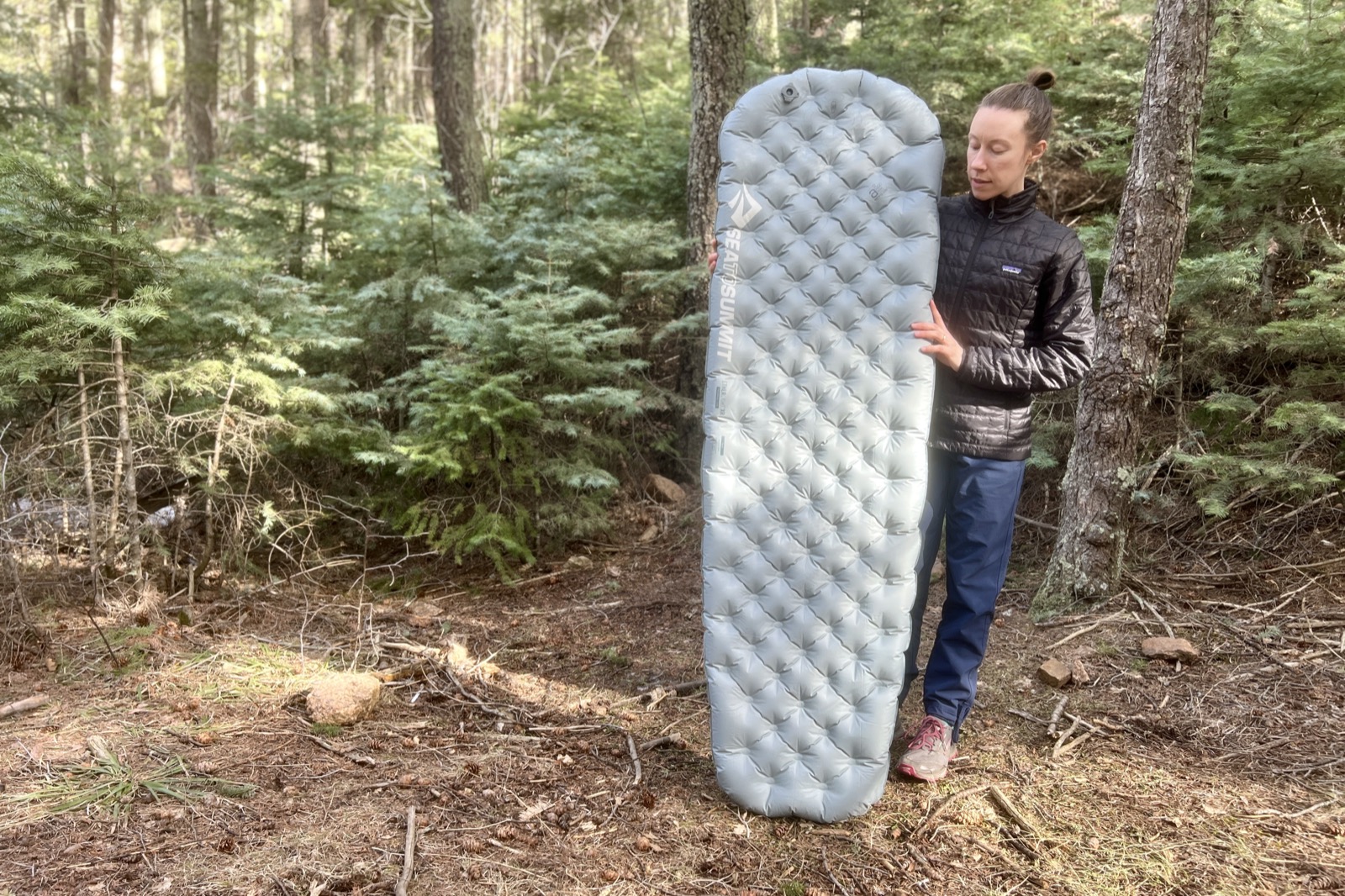
Bottom Line
The Sea to Summit Ether Light XR Insulated is one of the more comfortable, durable, and easy-to-set-up sleeping pads we’ve tested. We have extensive experience with its predecessor, the XT Insulated, and enjoyed the new XR Insulated version. The new version is warmer, lighter, quieter, and packs down a bit smaller. We noticed it was more comfortable and warmer on our ski trips in Colorado’s Rocky Mountains.
Featuring a quilted pattern for superb support, cushy “air sprung cells” with 4 inches of thickness, and inclusive sizing that caters to all body shapes and sleeping styles, the XR Insulated brings the comfort of home to the backcountry. The 40D fabric and attention to detail add solid durability, and it’s plenty warm enough for three-season treks.
However, you’ll tack on some ounces for this level of comfort and durability. At 1 lb 1.3 oz, this pad ranks among the heavier and bulkier pads. For this reason, it will miss the mark for ultralight and minimalist backpackers looking to save every ounce they can.
The XR Insulated isn’t the most affordable on our list of the best backpacking sleeping pads, but it’s a solid choice if you’re a three-season backpacker who wants a seriously comfy pad with a long-lasting design.
Quick Specs
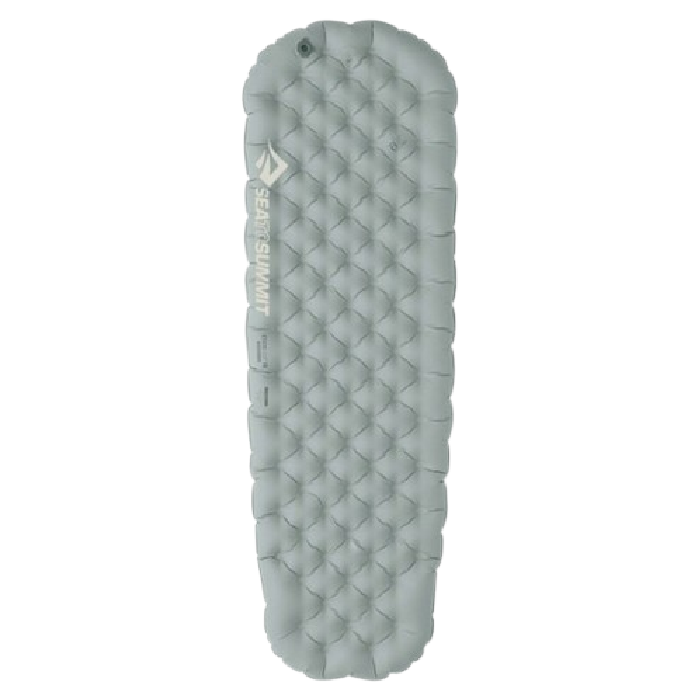
Sea to Summit Ether Light XR Insulated
Thick, Comfortable & Durable Sleeping Pad
CleverHiker Rating: 4.4/5.0
Price: $200
Weight: 1 lb. .6 oz.
R-Value: 4.1
Thickness: 3.9 in.
Pros
- Semi-lightweight
- Above-average comfort
- Exceptionally durable
- Integrated pump sack
- Cushy
- Good weight distribution
Cons
- Price
- Weight
- Slightly rubbery feel/sound
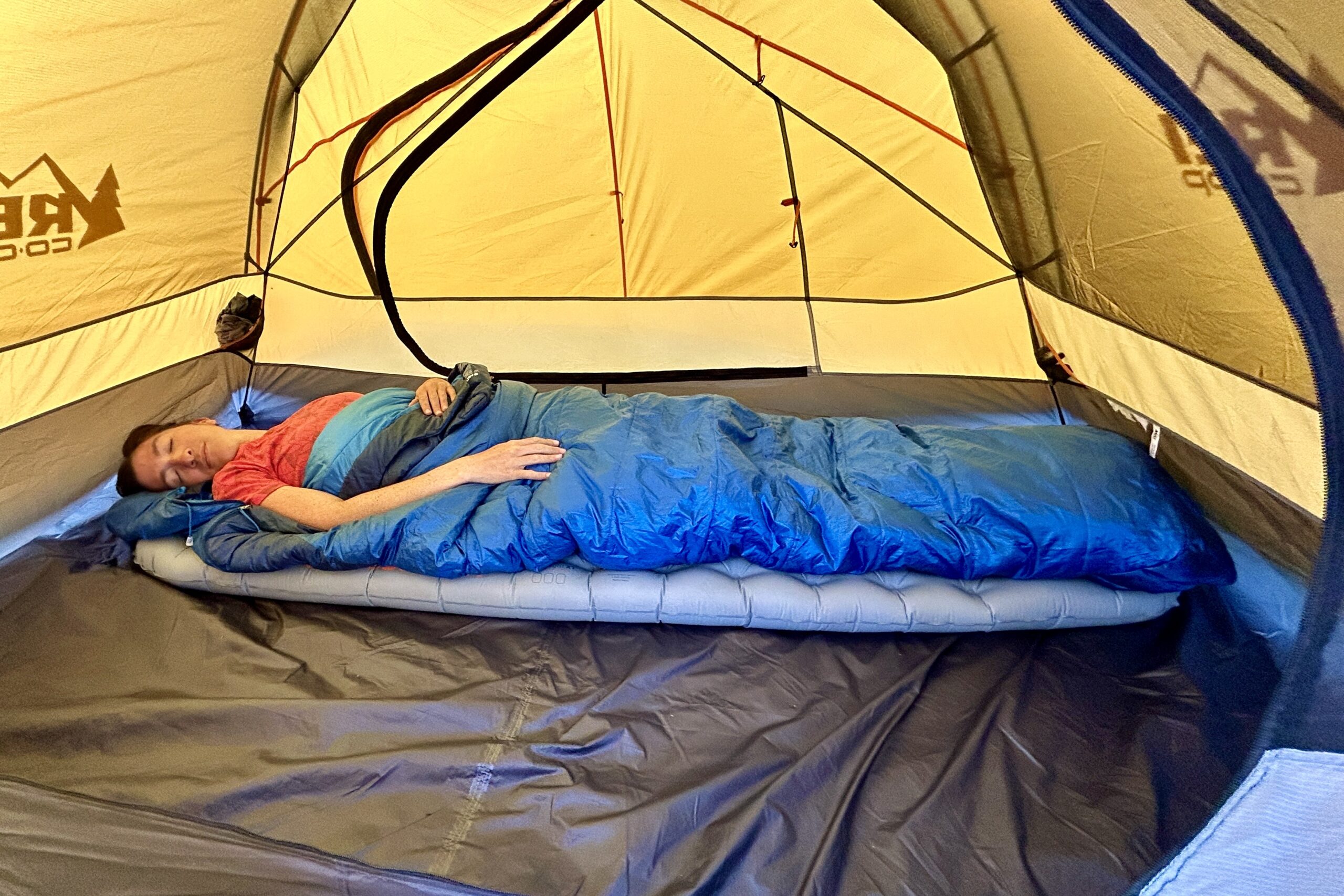
Comfort
The secret behind the Ether Light XR’s comfort is in its Air Sprung Cell baffle construction. Most sleeping pads are made with either horizontal or vertical air baffles, which can lead to uneven weight distribution. Horizontal baffles tend to compress more in the hip region and have a firmer feel overall. Vertical baffles can make you feel like the filling in a taco.
The individual cells of the Air Sprung Cell baffle design offer more points of compression so the pad can conform to your body and eliminate any awkward pressure points, like a spring mattress at home.
The mummy shape of the Ether Light XR is much wider than your typical mummy pad and tapers more gently toward the feet. If this extra width still isn’t enough to keep you from feeling like you’re rolling off the pad, it also comes in a rectangular version. The Ether Light XR comes in five sizes and shapes, ranging from mummy to rectangular.
The Either Light XR is optimally suited for tossers and turners. The 3.9-inch thickness paired with the cell baffles makes the pad comfortable for all sleeping positions, and the pillow lock system (included hook-and-loop adhesive pads) helps keep your pillow locked in place. The valve system includes a micro-adjuster to dial in your preferred cushiness.
Unfortunately, the plasticky surface can feel a bit clammy against bare skin on warm nights, which may be a downside to some.
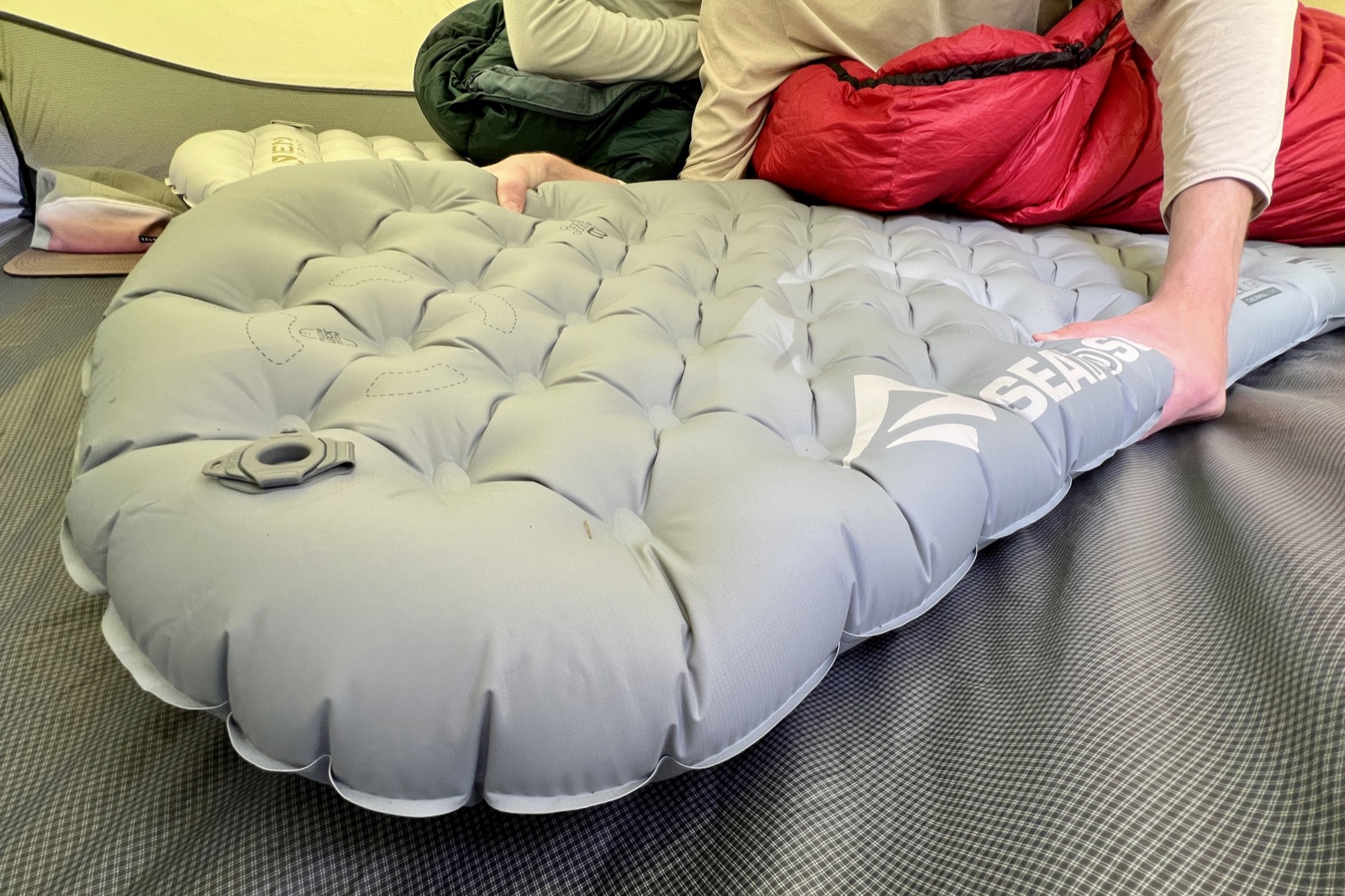
Weight
The Sea to Summit Ether Light XR Insulated isn’t an ultralight pad, but it has a decent warmth-to-weight ratio, especially considering its exceptional durability and comfort.
The regular size Ether Light XR with the stuff sack included weighs about 18.7 ounces. It delivers a lot more comfort and packability at only a few ounces heavier than a typical foam pad. The whole thing packs down to about the size of a one-liter Nalgene bottle.
Sea to Summit saves a couple of ounces of weight on this model by integrating the pump sack and stuff sack into one bag instead of two. It’s not a ton of weight savings but worth mentioning.
Overall, justifying the few extra ounces comes down to your sleep preferences, and if you’re looking for long-term comfort, we think it’s buy.
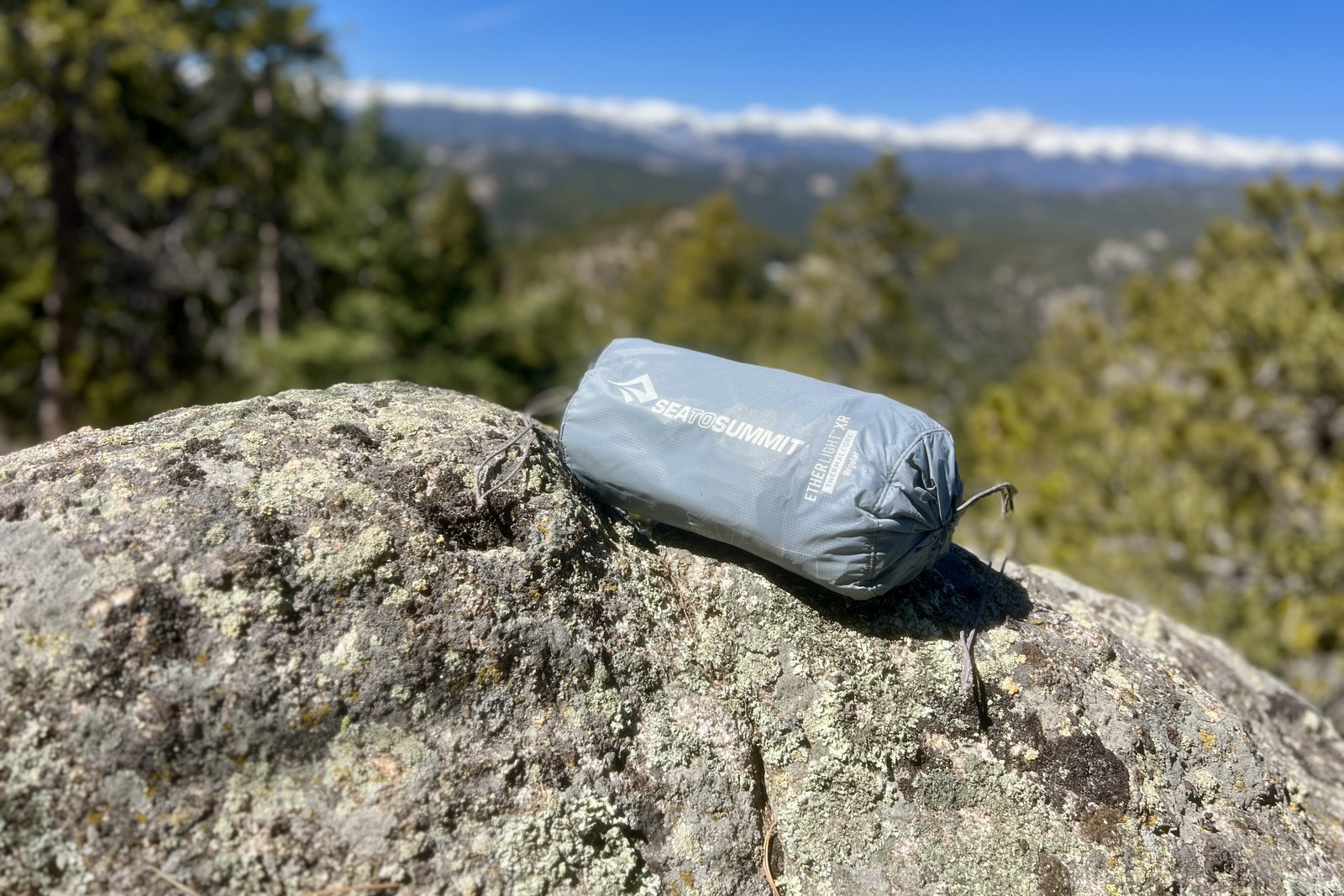
Durability
One area where the Ether Light XR Insulated thrives over most ultralight pads is durability. The pad features 30-denier nylon on the top and 40-denier nylon on the bottom with TPU lamination to further increase its abrasion resistance.
The material is noticeably more heavy-duty when you hold it in your hands, and 30-40D nylon is a significant step up from most ultralight pads with materials as thin as 10D.
The baffle construction is also more challenging to overinflate, making it less vulnerable to punctures. In case a puncture does happen, Sea to Summit includes a complete patch kit for repairing the pad in the field.
We have no complaints about the durability of the inflation valve or seam construction after dozens of nights of use.
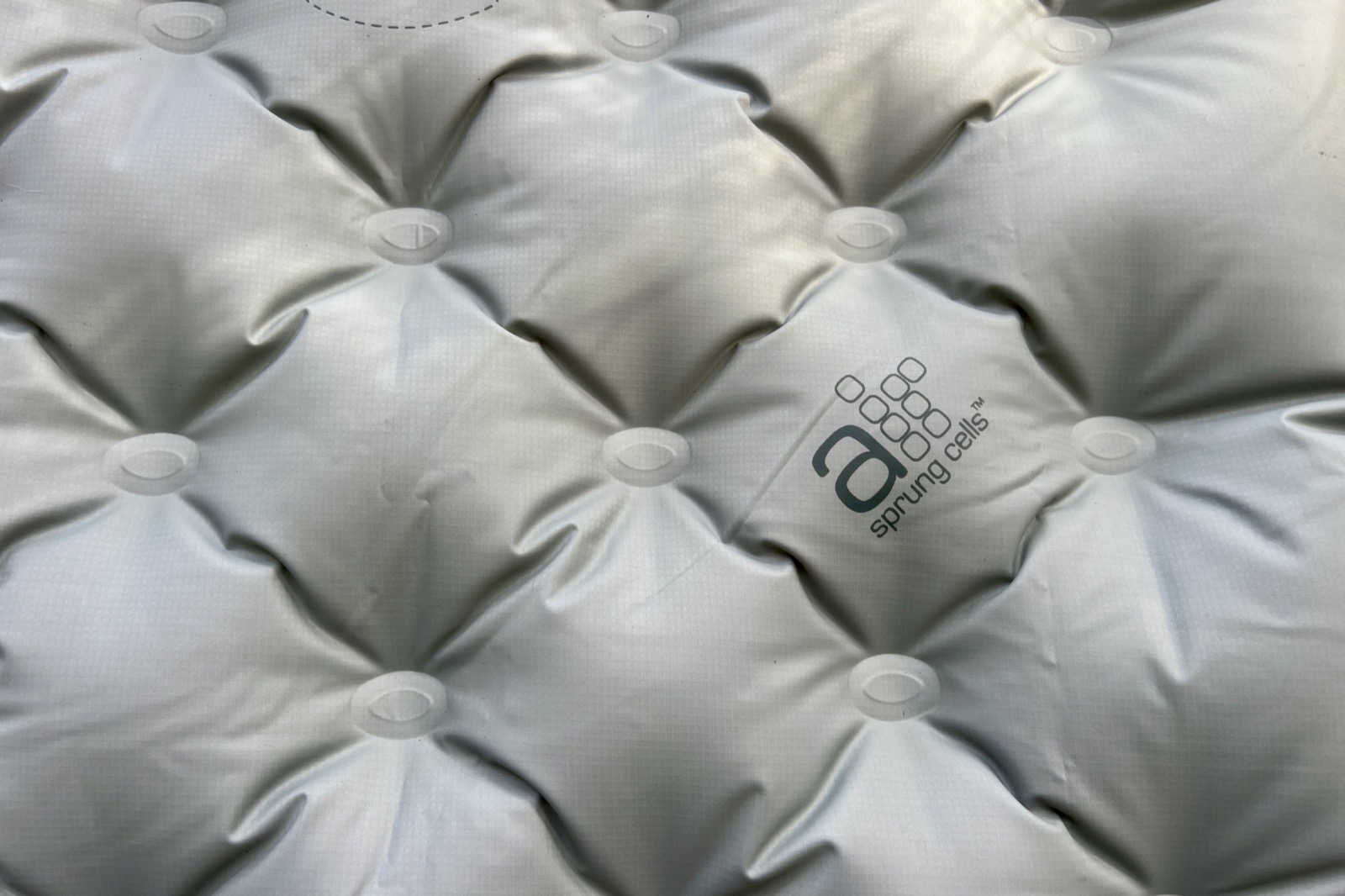
Warmth
The Ether Light XR Insulated is advertised as a cold-weather sleeping pad with an R-value of 4.1, but we would consider it more of a “chill weather” sleeping pad. Although it’s a bit warmer than the previous Ether Light XT, the R-value is a little low to use as your sole pad in the depths of winter.
However, it easily covers summer and the shoulder seasons of spring and fall. We camped with this pad in winter and spring in the Rocky Mountains, and it performed well down to about 30ºF. For more warmth, check out the Ether Light XR Pro.
The technology behind the Ether Light XR’s insulation is a suspended TRM layer – a thin piece of thermal reflective material that acts to reflect your body heat back at you. Because the TRM is suspended instead of adhering directly to the bottom, less body heat is lost in the reflective process. The 3.9-inch thickness of the pad also helps keep the cold ground away from your body.
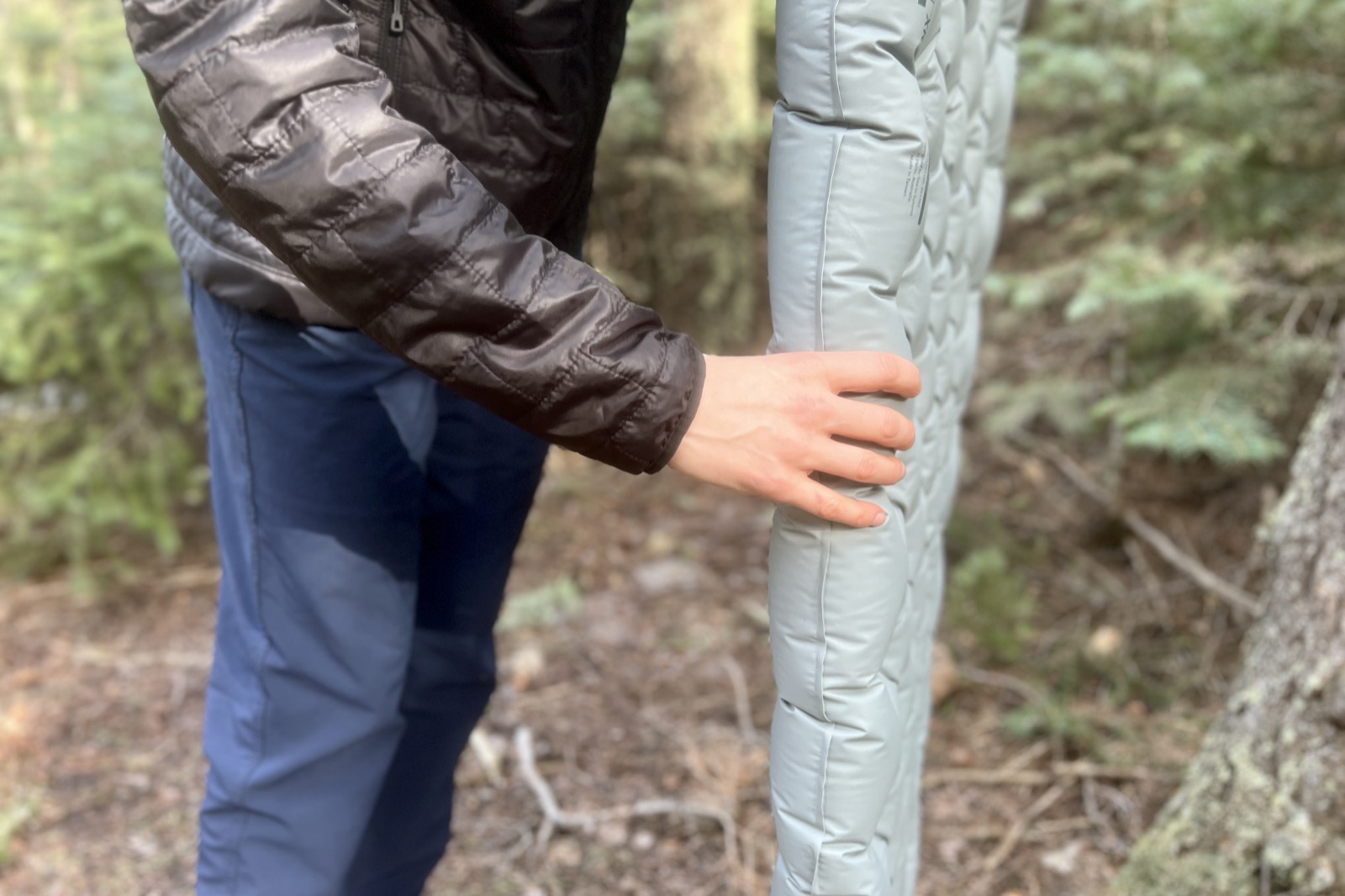
Ease of Setup
The number one complaint hikers have with air pads over foam pads is the extra time it takes to inflate them night after night. The Ether Light XR Insulated is fairly easy to set up thanks to simple and efficient components. It takes us 90 seconds to inflate.
The pad’s thicker fabric, with 40D nylon on the bottom and 30D on top, unfolds easily, and it doesn’t take long to inflate the full 3.9-inch depth.
When backpacking, we prefer gear that serves several purposes, and in this model, the stuff sack doubles as a pump sack. As a storage sack, it’s roomy and easy to get the pad in and out, so you won’t be wrestling with it.
As a pump sack, it snaps on securely to the single valve, and the wide opening only takes three or four rounds to fill the pad. During our testing, we averaged an inflation time of about one minute and thirty seconds.
The Ether Lights’ one-way valve system allows for efficient inflation, and micro adjustments are a breeze—just press a small center button on the valve to let out a tiny bit of air at a time and fine-tune the firmness to your liking. The only downside is that we found the valve less secure than others, with the pump sack occasionally popping off.
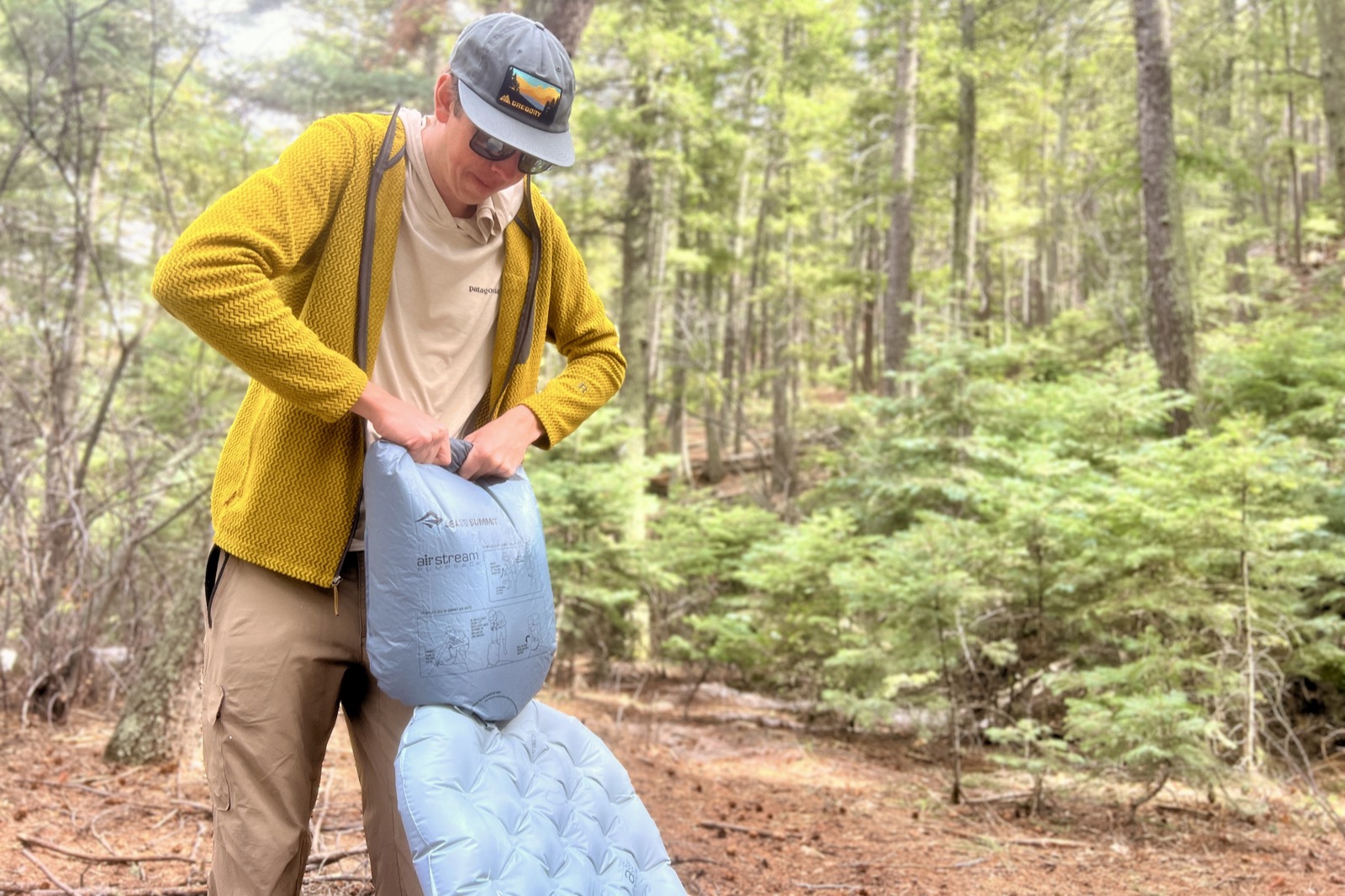
Should You Buy the Sea to Summit Ether Light XR Insulated Sleeping Pad?
If you don’t mind backpacking with a bit more weight for top-of-the-line comfort, the Sea to Summit Ether Light XR Insulated is worth considering. Its supportive 4-inch thickness and soft air-sprung cells offer a plush sleeping surface that feels more comfortable than most competitive pads. The Ether Light is warm enough for summer backpacking trips, most shoulder season trips, and even mild winter conditions.
The smart stuff/inflation sack makes this pad easy to inflate and pack away, and its dump valve makes packing up quick. The price of the Ether Light is on the high end, but it is a high-quality product with solid durability.
Even without its pump sack, the Ether Light XR is a bit heavier and bulkier than most of its competitors in this price range. However, the increased warmth compared to past models helps justify the extra weight.
This model also has a slightly rubbery texture and sound that may not suit sensitive sleepers. But for those willing to pay a little more and carry a little more, the Ether Light XT Insulated offers a seriously comfortable night under the stars.
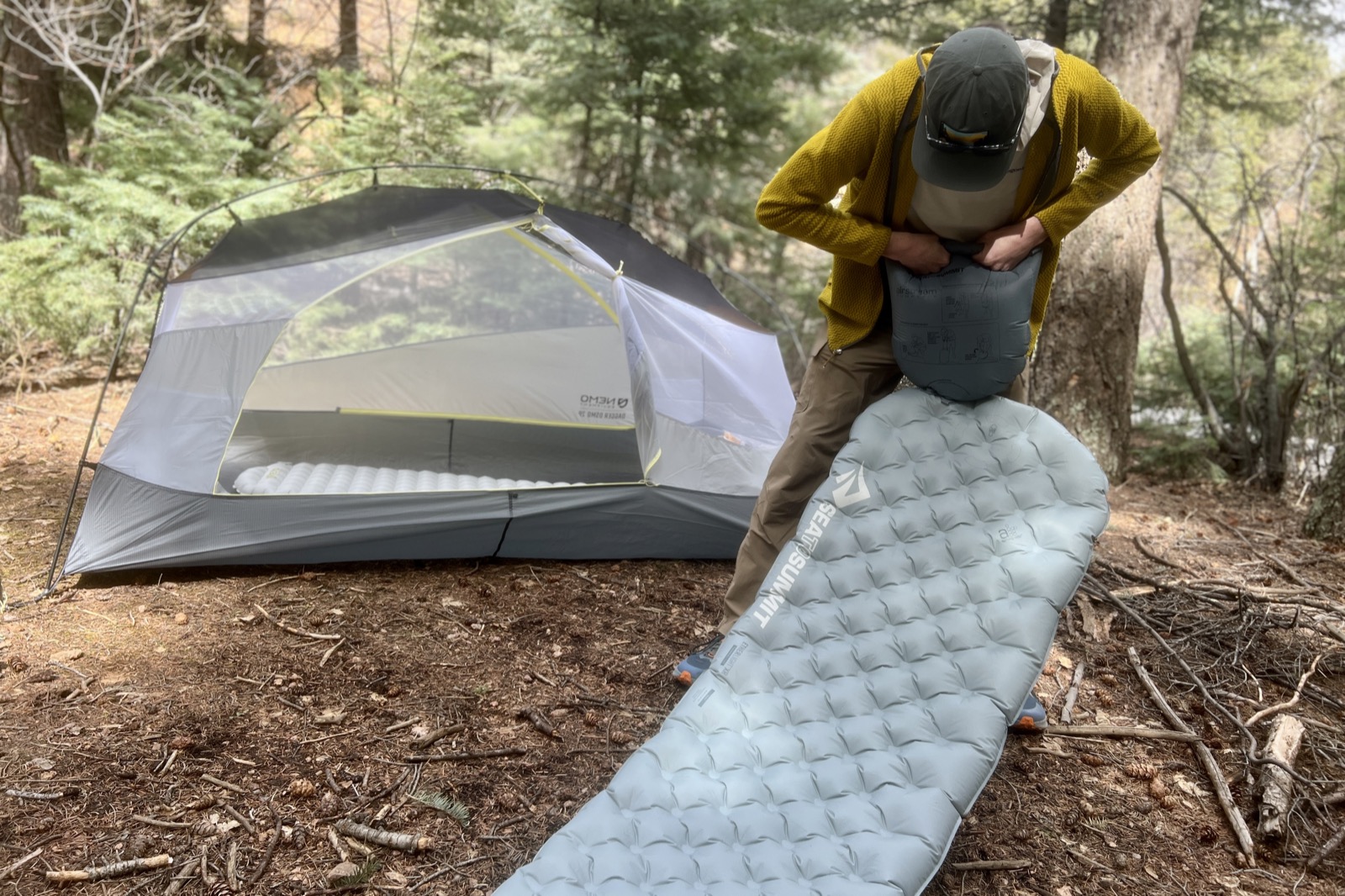
What Other Sleeping Pads Should You Consider?
NEMO Tensor All-Season Review: The NEMO Tensor All-Season is one of the most balanced backpacking sleeping pads. It costs about the same as the Ether Light XT Insulated, but it’s much warmer and weighs quite a bit less. The Tensor is also very comfortable, easy to use, and durable. This pad is among our favorite choices for backpacking sleeping pads.
Therm-a-Rest NeoAir XLite NXT Review: The NeoAir XLite NXT is another sleeping pad at the top of the list for comfort and quality. For around the same price as the Ether Light XR Insulated, the XLite is also much warmer and lighter. In fact, the XLite NXT is one of the lightest insulated sleeping pads on the market, making it a great choice for hiking long miles. A few minor details knock the XLite NXT down a notch for ease of use, but it’s clearly among the best backpacking sleeping pad options out there.
Sea to Summit Ultralight Insulated Review: This other Sea to Summit model shares many of our favorite traits with the XT Insulated, but it weighs less and is more affordable. It’s also easy to set up and has about the same R-value, but it’s not as thick, so you may bottom out when shifting around. This pad is a good option for backpackers who still want comfort and weight savings, but it comes at a more budget-friendly price.
